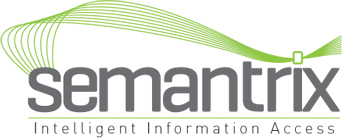TopQuadrant’s TopBraid Ensemble ![]() is a web-based application assembly toolkit for rapidly creating model-driven applications. With TopBraid Ensemble, you can quickly assemble Rich Internet Applications out of pre-built application components and templates.
is a web-based application assembly toolkit for rapidly creating model-driven applications. With TopBraid Ensemble, you can quickly assemble Rich Internet Applications out of pre-built application components and templates.
TopBraid Ensemble™ is the quickest route from an ontology to a working web application. Once you have your ontology, optionally with some RDF data, all that remains to be done is pointing a web browser to one of the pre-configured application templates.
Applications pre-packaged with Ensemble let you navigate through semantic models and corresponding data, using trees, grids and search form components. They can also include maps and graph visualization and query builder components.
TopBraid Ensemble (TBE) applications are not for browsing only. They feature model-driven edit forms, drag and drop and auto-complete operations. All TBE applications offer full multi-user support. Ensemble applications work with any data store supported by the TopBraid Suite and with all popular web browsers.
Pre-packaged applications are merely a starting point with Ensemble. Using only a web browser, you can easily customize applications by adding, removing and reconfiguring components, popup dialog boxes, and additional pages to create multi-page applications.
For more advanced application scenarios, TBE applications can take full advantage of SPARQL Rules (SPIN) and SPARQLMotion. Constraint violation rules associated with classes are displayed in the TBE forms in the same manner they are shown in TBC forms. TBE components can detect and offer context- specific actions to application users implemented as SPARQLMotion web services. And, if TBE pre-built components are not enough, you can develop custom components with an integrated SDK.
TopBraid Ensemble can be used to quickly assemble a variety of dynamic model-based Rich Internet Applications. These include systems for collaborative development and management of controlled vocabularies, dynamic data discovery, search and exploration applications, mashups and semantic wikis:
- Rich Internet Application (RIA) components based on Adobe Flex – forms for editing and searching, data grids, tree viewers, maps, graphs, buttons, and a visual SPARQL query constructor
- Plug-in extensibility, and extended application behavior with SPARQLMotion scripts
- Minimal cost to develop and maintain applications – speeds up application development, testing and deployment
- Flexible creation of semantic model-driven solutions that more easily support business changes
- Customization by configuration, not coding, makes it possible for business analysts to directly participate in application development and evolution
See also:

